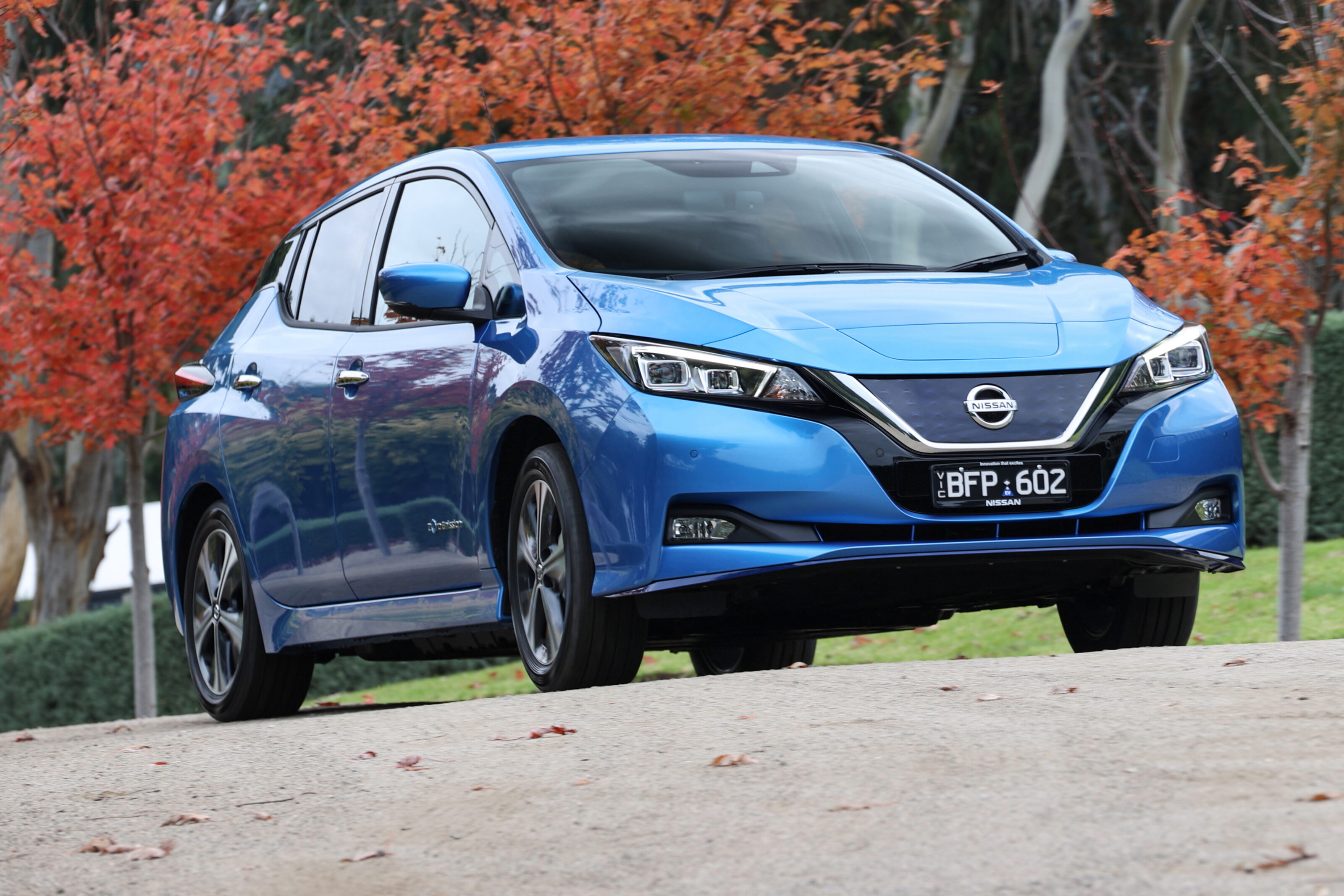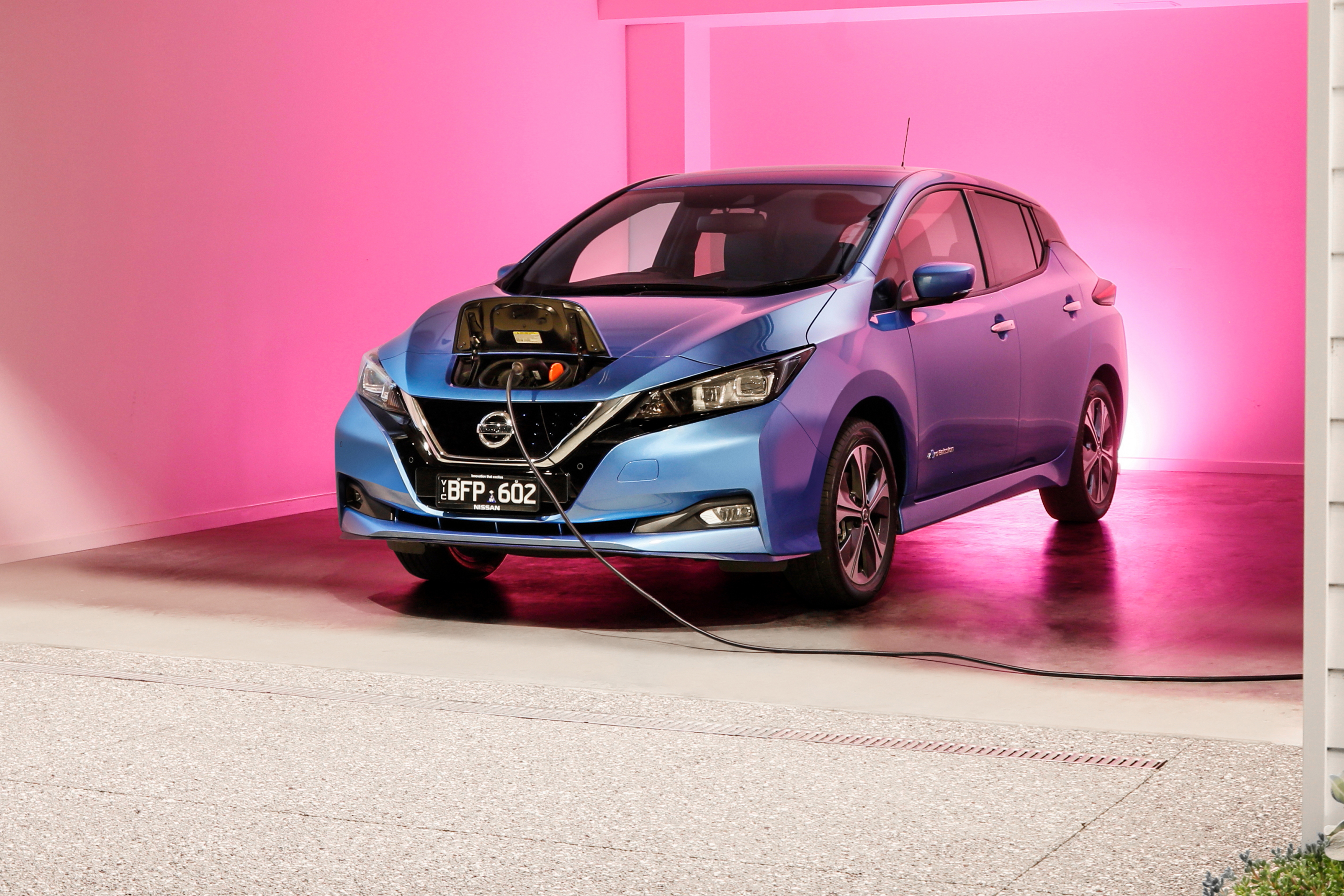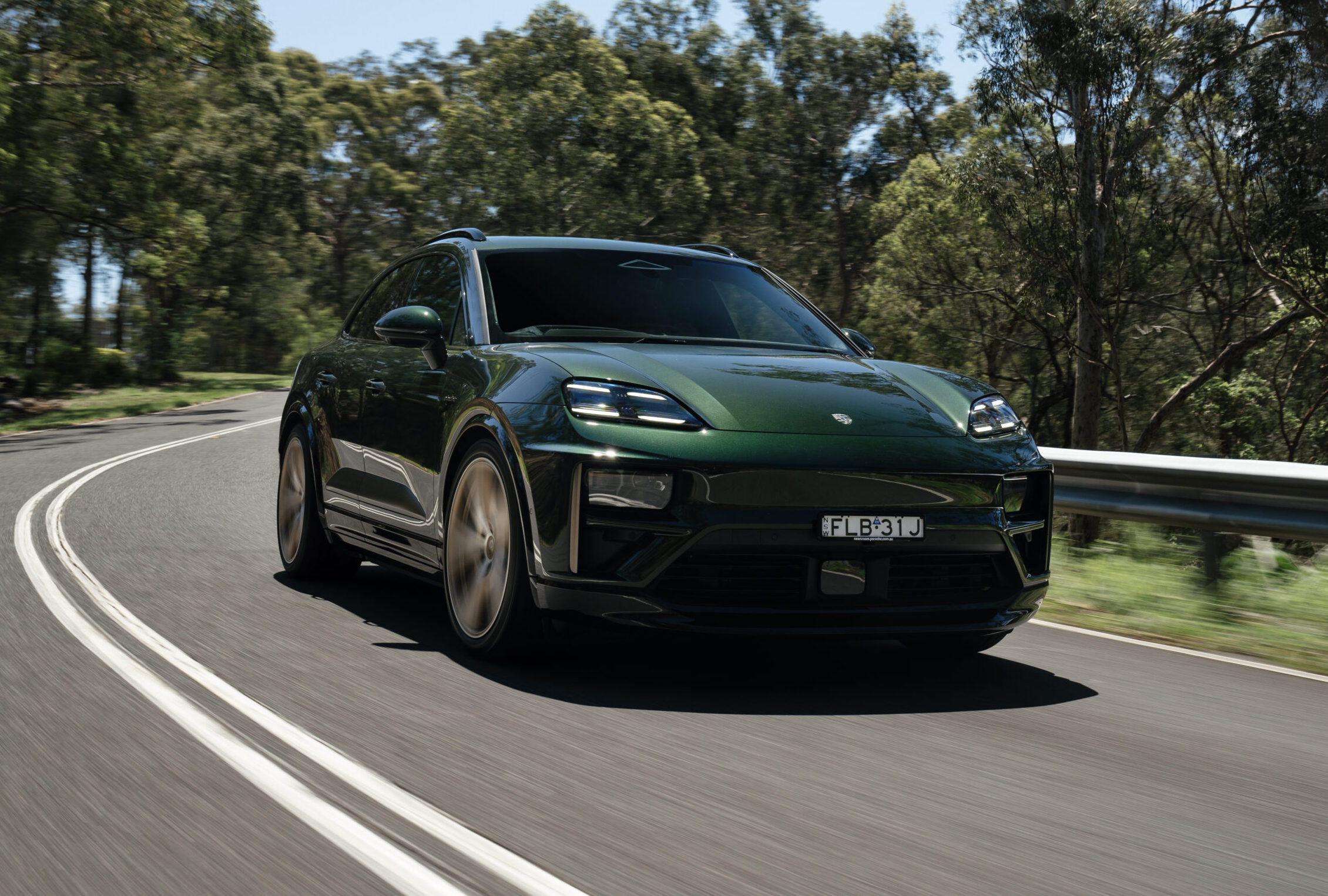Score breakdown
Things we like
- Boosted performance
- More competitive range
- Same practical features
Not so much
- Monstrous asking price
- Ageing packaging
- Strange seating position
Nissan’s performance-enhanced Leaf e+
- 2021 Nissan Leaf e+ launches at $60,490 before on-road costs
- Lithium-ion battery capacity boosted 55 percent
- Price jumps by more than $10,000
- Original 40 kWh battery version still available
I’ve never relished in the ageing of a vehicle more than the Nissan Leaf. Not because I want to watch it wither and yield to a rising army of newer electric vehicles, but because an old EV is an ironic symbol of progress.
While the unstoppable momentum of new zero-emissions vehicles builds exponentially, there are few that can claim to have dipped their toe in the water earlier than the little Japanese hatchback, and even fewer are still going strong today. But how strong?
Among other brands, Porsche’s Taycan has categorically proven electric can be fast and aspirational, Audi and Mercedes and Jaguar will sell you an SUV of sorts, while Tesla offers a model that will travel more than 600km on a single charge. The Leaf however, has spent a decade mastering the art of blending in.

That’s not a criticism. For a vast majority of Australian drivers, a car falls into the same category as a fridge and lawnmower – an unremarkable device that has a simple job to do – and basic electric vehicles will doubtless be the ones that eventually kickstart the revolution on Australian roads.
But that won’t happen until transitioning to a battery-powered car makes financial sense – and that brings us to the new Nissan Leaf e+.
You can still buy the same second-generation model that arrived in 2017 powered by a 40kWh battery for a sniff under $50,000 which is not far off Australia’s cheapest EV – the $44,000 MG ZST – but it is still a whole heap of cash for a small Japanese hatchback.
But now there’s this, the Nissan Leaf e+. To get into one, you’re looking at $60,490 before on road costs.
For that 21 per cent increase in price, the e+ ups battery capacity by 55 per cent – to 62kWh – and that means more of everything.
Power is up from 110kW to 160kW, torque has increased from 320Nm to 340Nm.
Range is also now significantly longer, with up to 385km of driving range possible on a single charge, versus 270km from the 40kWh Leaf.
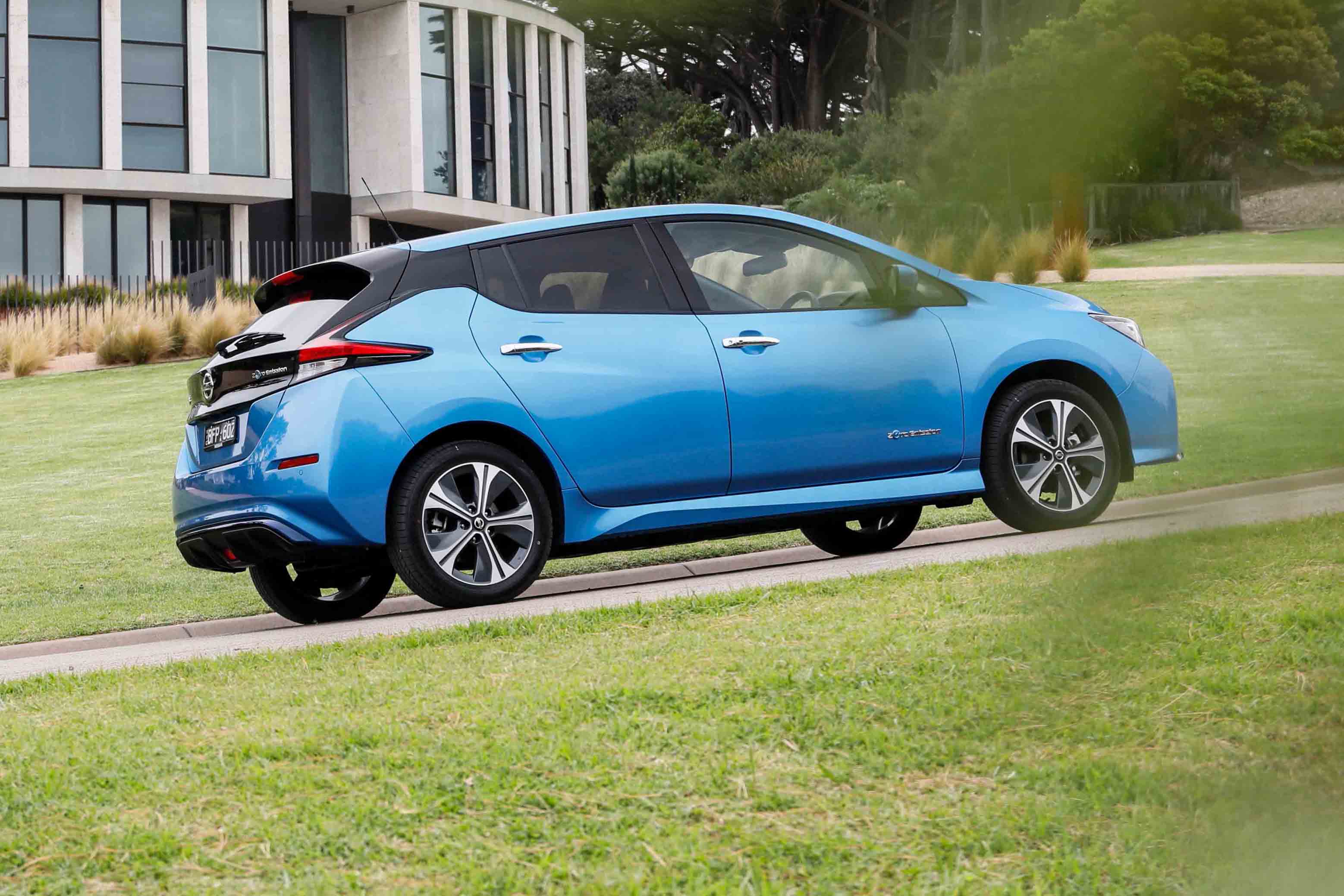
For context, the Leaf e+ will go further than a $48,970 Hyundai Ioniq, but won’t match the 449km range of a $62,000 Hyundai Kona electric.
As to whether 385km is sufficient for your daily or weekly travel purposes, or whether the original 270km would do, you alone can answer that. What’s easier to examine, however, is the boost to performance that the ‘bigger’ battery has brought.
While the original version would hit the benchmark 100km/h from standstill in 7.9 seconds, the e+ needs a whole second less, putting this small hatchback in a different performance class. On paper, that’s about the same as a Mini Cooper S but the power delivery and feel is very different. As you might expect.

In more efficiency-focused modes, the Leaf e+ hides a large part of the full performance behind a step in the pedal that feels a little like a heavy kick-down. Push through it and the Leaf has a new level of energy and eagerness that was missing from previous versions.
The Leaf has always rewarded the enthusiastic driver with instant off-the-mark torque but the added power available in the e+ blends that initial surge into a longer-lasting blast of acceleration. This alone makes the updated Leaf feel far happier out on the open road and away from what many would consider its preferred habitat.
Its zero-emissions drivetrain and single-pedal driving style is still very applicable to the urban commute and shorter about-town missions, but with a significant step up in performance matched with a greater range, the Leaf is a proper escape pod at last.

The cruising ride is smooth and relaxing with little noise from the tyres and only slightly more wind noise from the door mirrors. Of course, there’s nothing to be heard from the drivetrain other than a satisfying whistle under hard acceleration from low speed.
Nothing significant relating to the Leaf’s chassis has changed with the introduction of the beefier battery, but the extra grunt enables the dynamics to be more fully explored and enjoyed. The 62kWh battery is actually no physically bigger than the 40kWh unit, although it has added about another 150kg to the kerb weight. But it’s hard to tell as the weight is offset by the extra performance.
It’s as if the Leaf suspension was tuned from the start to deal with more power and arriving at corners with a little more pace doesn’t bother grip levels or overwhelm the front end control or decent communication through the steering.

Less than desirable driving conditions were encountered during our Leaf road trip and although there’s nothing ostensibly unsettling about the dynamics in cold and wet conditions, it doesn’t encourage the limits to be found.
The e-pedal driving mode allows the accelerator to be used as both accelerator and brake – backing off engages aggressive regenerative braking which is effective and enjoyable in more sedate driving but is best switched to the more orthodox two-pedal arrangement when more braking power is required.
An initial prod of the left pedal is confidence-inspiring, lacking the weird soggy bounce of many EVs and hybrids, but push through for more braking force however and the progressiveness falls off a cliff. And while we are bemoaning brake pedals, the Leaf is still equipped with a foot-operated parking brake.
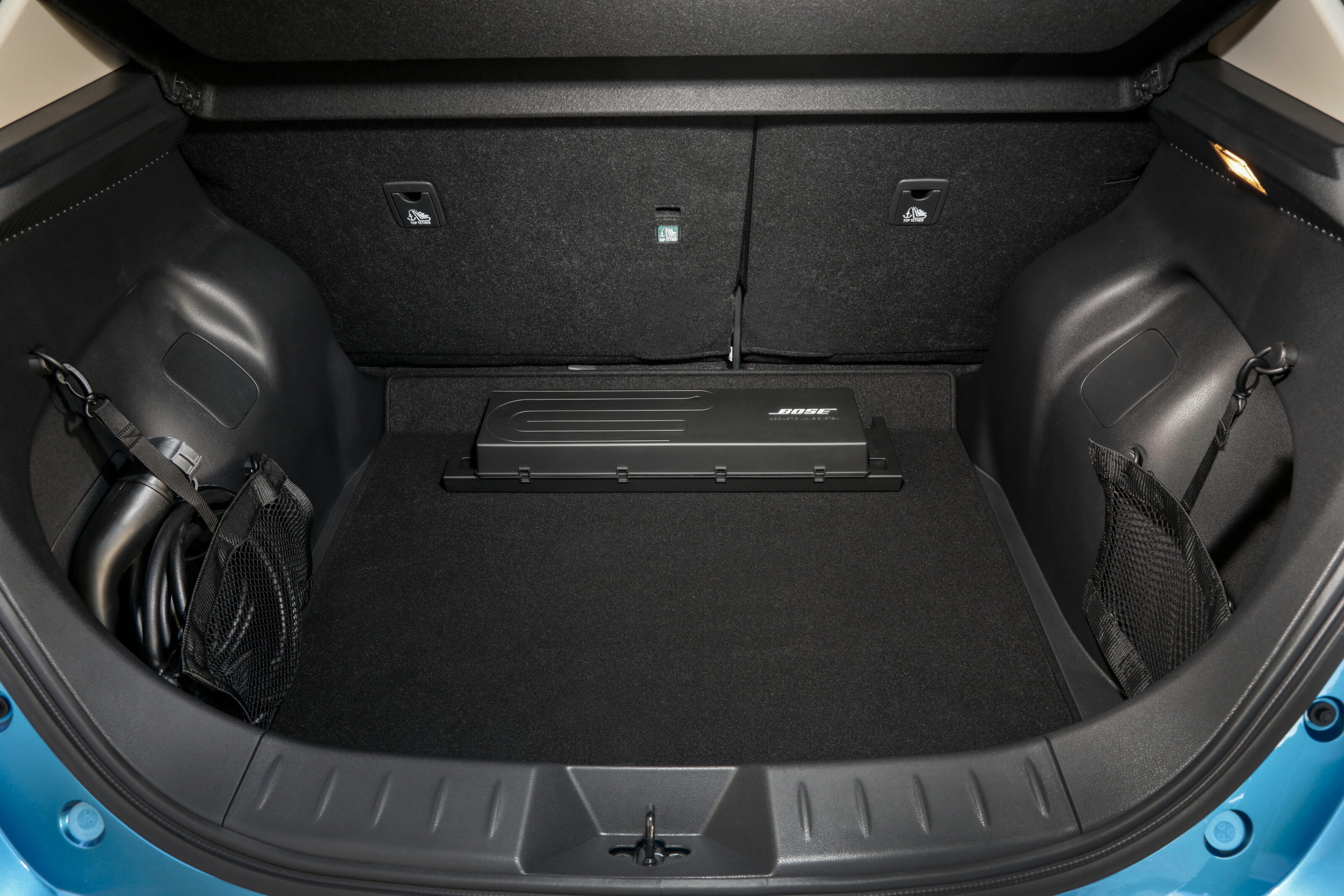
I don’t consider this an automotive cardinal offence, especially as the often-cited safety criticism doesn’t appear to apply here, with a full five-star rating awarded to the Leaf by ANCAP in 2018.
Its decent safety rating is thanks in part to a respectable suite of Nissan’s Propilot semi-autonomous safety tech, which includes autonomous emergency braking, lane-keep assist, blind-spot monitoring, rear cross-traffic alert and, a 360-degree camera and active cruise control.
Almost without exception, that kit is either dormant unless a serious situation looms or works relatively unobtrusively to keep everything pointing the right way. Apart from the lane-departure warning. Not only is the system wildly hyperactive, but the vibration warning feature is also annoyingly noisy. Ironic that the Leaf is powered by electricity but its lane-departure system sounds like it’s a diesel.
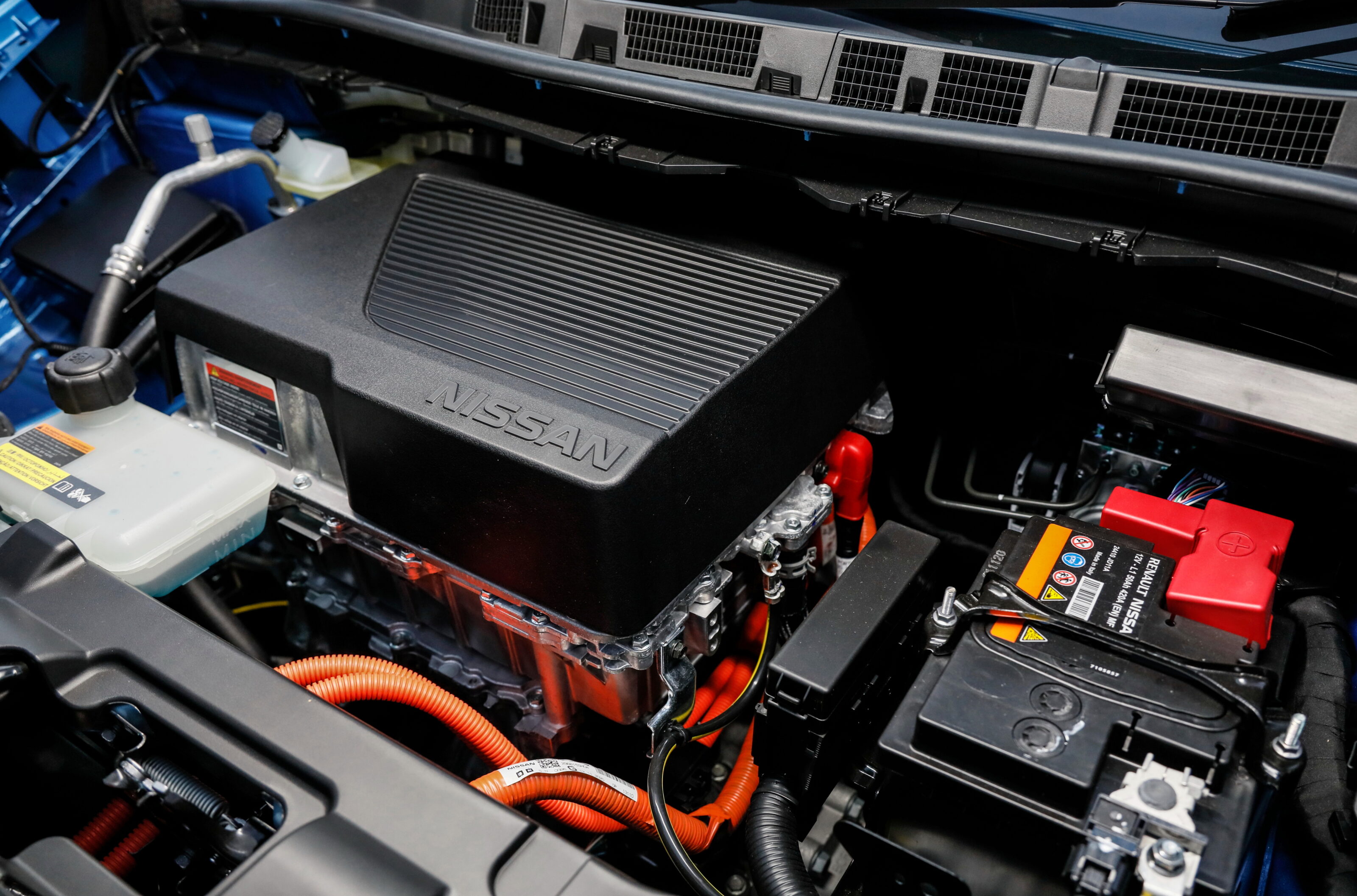
There are better examples of practical features. At the back, the Leaf e+ boot measures 405 litres in volume and hides a space-saver wheel, while the cabin is generous and light. Only the curious quarter-lights in the somewhat thick A-pillars limit the view out.
From a design perspective, the Leaf’s cabin was never knee-weakening and it is now starting to show its age. The eight-inch touchscreen and cute gear-shift lever are perfectly functional but just a little dated, especially when viewed in the context of most modern hatchabcks.
The use of some cheap plastics further dents the cabin feel and quality and while the front seats are generally comfortable, there’s no tilt or height adjustment – presumably to accommodate the battery that hides under the floor.
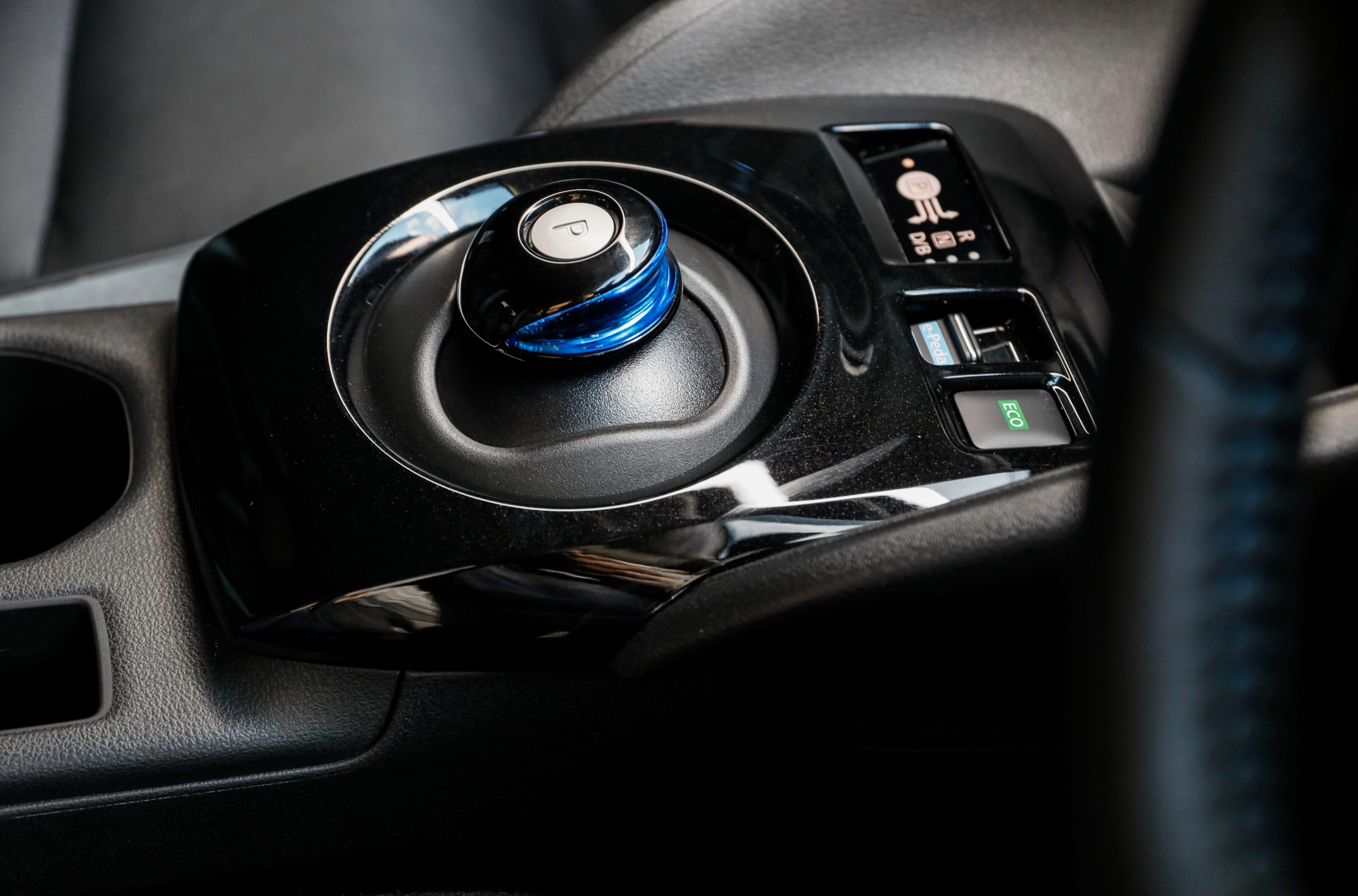
All of these elements combine to make the Leaf feel somewhat aged and its futuristic exterior can only hide its years to an extent. Despite a decade in the game though, the Leaf is still the car that’s closest to offering true car-to-grid flexibility.
Contained within its complicated power management systems is the ability to not just draw power from the grid, but the option to return energy to it. This opens up a range of power use possibilities including better exploitation of off-peak power electricity tariffs, home solar-generation optimisation and even emergency power solutions.
There’s still a little work to be done from the energy provider’s end but the Leaf? It’s ready.
As far as more conventional charging goes, the Leaf e+ takes a step up over the 40kWh version and is now chargeable with up to 100kW infrastructure. While the smaller battery version has a maximum charge rate of 50kW and can receive an 80 per cent fill in an hour, the e+ manages the same in 45 minutes. So that’s a greater maximum range topped up in less time.
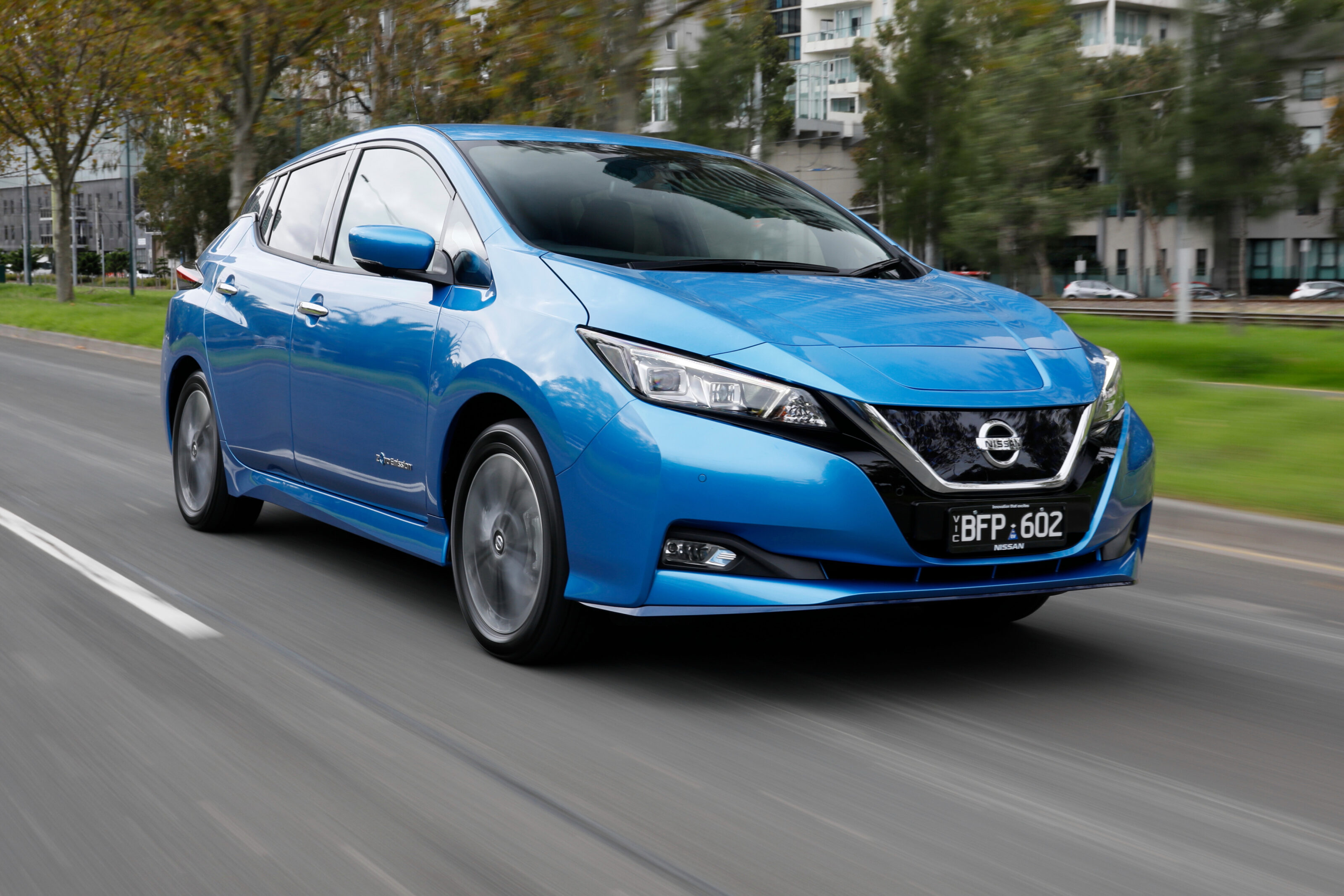
Of course, overindulge in the heated seats, steering wheel and cabin heating, occasionally clear the windows with the air-conditioning and fully exploit the extra performance, and the Leaf won’t quite return the new extended range or the 400km that our test car was claiming on departure.
But if you frequently travel more than 300km in a single trip and can justify the hefty price for a small hatchback, the Leaf might finally make its way onto your EV consideration list.
Even with its new more potent e+ option, the Leaf is getting a bit long in the tooth but that doesn’t mean Nissan – one of the pioneers of ‘affordable’ electric transport – is being left behind in the EV race. Before long, the Ariya will introduce a crossover right when the market demands it, and the third-generation Leaf will continue the model’s bloodline into more contemporary territory.

But even in its twilight form, the Leaf represents so much more than an electric hatchback. An old EV is proof that the concept is standing the test of time and Nissan’s commitment to zero-emissions transport is paying off.
I might be jumping the gun, but with the arrival of a new more versatile Leaf, I’m starting to fantasise about finding a forgotten example under a dusty sheet in a barn somewhere many years from now.
Score breakdown
Things we like
- Boosted performance
- More competitive range
- Same practical features
Not so much
- Monstrous asking price
- Ageing packaging
- Strange seating position


